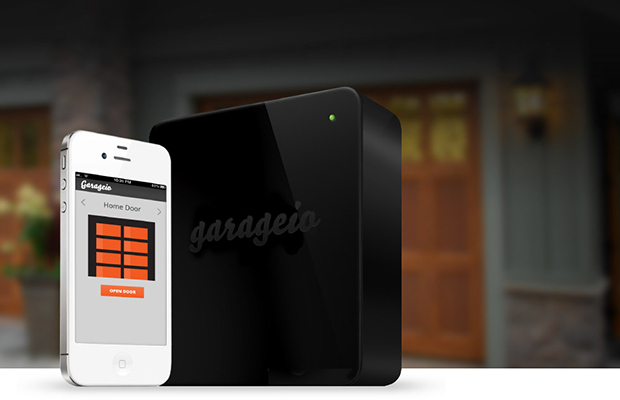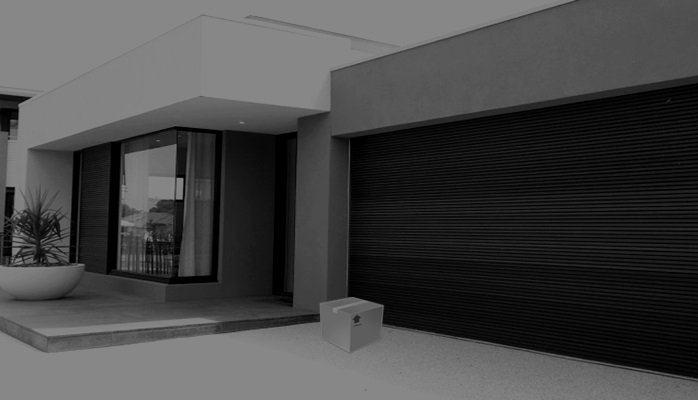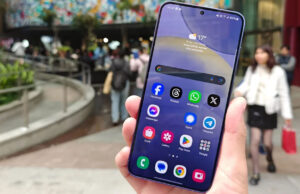Garageio Brings Intelligence To Your Garage

Shoppers this holiday season traded in their overstuffed retail bags for a comfy seat in front of the computer. According to the National Retail Federation’s Thanksgiving Weekend Survey conducted by Prosper Insights & Analytics, more than 151 million people said they shopped either in stores and/or online over the weekend. More importantly, nearly 102 million people walked the brick-and-mortar shops while more than 103 million checked out online.
While this long predicted shift in behavior comes as no surprise, especially since free shipping and two-day delivery has almost become industry standard, the increased volume does create a logistical headache for many carriers and frustration for many consumers. Package theft from doorsteps across the country has increased at such an alarming rate, it has coined its own term – “porch pirate.”
Theft of packages has become big business. Suspected thieves resell their stolen goods for a deep discount leaving a growing group of angry victims and a few empty gift spaces under the tree. Industry experts and security professionals have advocated for finding alternatives, such as delivering items to your place of employment or shipping to a delivery store to be picked up on your way home. While these and many others may be viable solutions, the convenience factor is docked more than a few points with all the extra hassle.
Our garage has long been viewed as a safe haven for our transportation and functioned as a pseudo storage shed for all our items deemed not worthy of precious indoor real estate. More importantly, it acts as the DMZ of our home where all the other things we really care about reside. Our view of the garage has changed over the last few decades and its reinvention just might solve the next major overhaul to all our logistics problems – access.
The smart home has provided connectivity to an abundance of products such as lights, thermostats, and cameras. The growth will only continue. According to Forbes Magazine, the IoT market is poised to be a $7.1 trillion market by 2020, up from $1.9 trillion in 2013, flooding our homes with connectivity into every aspect of our lives.
The garage, while married to the smart home ecosystem, kind of exists in its own space with its own friends. Pioneering in this smart garage space is Garageio. Starting off in 2012 as a universal smartphone controller for the garage, Garageio has evolved where some other garage controllers stalled – integrations. While controlling and monitoring your garage with your smartphone has utility to the niche it serves, it does not solve the main ideology and overwhelming hesitance for mass smart home adoption, or in this case, smart garage adoption. The issue is convenience.

It is not about using some smartphone application to control your home but rather your home adapting to your lifestyle and operating independently, or at least taking steps in that direction. For instance, Garageio with IFTTT allows you create recipes such as close my garage if it is snowing outside, close my garage if it is dark outside, open my garage when I arrive home, and so forth. Garageio with Amazon Echo or Fire TV permits you to just speak and have your door open or closed. Both are examples of your lifestyle dictating real world events. However, to come full circle, we now enter back into the topic of logistical convenience and access.
The future in logistics is quite possibly “secured access.” Garageio has navigated these muddy waters and has positioned itself to deliver on that experience. Consumers have entered into a very interesting race between privacy and convenience and at least in the garage space, convenience has the lead. With over 32% of online shoppers reporting having had a package stolen, 48% reporting having experienced receiving a package damaged by weather, and over 50% reporting they have somehow been inconvenienced in anticipation for a package delivery, it may not be a surprise when convenience wins the race.
Garageio has launched its secure access platform to beta users and aligned with logistics partners to provide one-time seamless access to deliver goods right into your garage. The experience allows for unattended, secure delivery of items from a variety of providers, diminishing the probability of theft and damage before arriving in the hands of the customer.
This delivery format does not limit itself to conventional packages. As great as it sounds not to have to pace around all day at work while the 65-inch LCD is sitting on your front porch (draped with a 24-inch welcome mat in a failed attempt to conceal its identity), the market potential and convenience factor of providing secure access is far greater.
In what some consider to be another dreadful brick-and-mortar experience, unlike the once a year Black Friday extravaganza, this process can repeat itself multiple times a week. If you haven’t guessed it – grocery shopping. Long lines, shifting inventory, uncooperative self-checkouts, and cart dodging are only some of the pitfalls of the grocery shopping experience.
In the late 1990s, the dot-com boom brought a whole host of web-based solutions for a variety of shopping problems. Along for the ride were early attempts to create a viable online grocery experience. Adoption was slow and eventually, the pilot light fizzled. Two things are attributed to the failure of the online grocery experience in the early days – technology availability and delivery limitations.
The widespread adoption of the smartphone drastically changed the landscape in many ways, especially in the grocery space. Where at one time, no one was willing to pass a grocery store just to go home and turn on their CRT monitor on the only family computer and order groceries using PayPal, the dynamic has now changed. Multiple smartphones, tablets, and computers in all different shapes and sizes, litter every corner of our environment. For many of us, we are always within arm’s reach of some connected device at all times. This change has caused a rebirth in the grocery space and has launched literally hundreds of newly created VC-backed grocery delivery services (Peapod, Instacart, Blue Apron, etc), as well as the larger players such as Google Express and Amazon Fresh.
The adoption has been pushing more consumers to relinquish at least some of their grocery list to a delivery service. In a recent survey, the two largest limiting factors consumers are faced with in ordering groceries are shipping costs and the delivery of perishable goods. The biggest burden to the delivery service is the logistical nightmare that is created trying to deliver milk and eggs to your house within the hour.
Fulfilling time-sensitive orders of perishable items to scattered locations is by no means a sustainable or scalable model. The delivery service has no choice but to pass some of that cost to the consumer in the form of the most industry feared combination of words – shipping cost. Consumers, spoiled by free shipping on most other products, exit this checkout process faster than the movement of inventory on Black Friday.
The other major hurdle to widespread online grocery shopping is the delivery of perishable items. Consumers opt out of the online experience partly because they have to pick up perishable items from the store anyway. They are unwilling, for good reason, to commit to having perishables sit on their sun-blasted porch for eight hours until they have left their jobs and arrive home. If only there was a way to deliver these perishable goods in a manner that did not require attended delivery, perhaps into a garage refrigerator or cooler?
Yes, in case you did not draw the parallel, it is part of Garageio access platform. Tight integration with grocery and meal delivery services provides access to place those perishables directly into your garage refrigerator. Meal and grocery delivery services can now service a larger geographic range in a wider time period without the need to hire additional resources. This results in drastically reduced overhead cost and allows services to potentially pony up on the free shipping aspect. Order groceries or your dinner in the morning and have it in your refrigerator when you get home from work – now that is convenience.
You can learn more about Garagio by visiting here: Website – Facebook – Twitter
Greg Colarich is the co-founder and Director of Business Development at Garageio. For more information regarding this article please contact greg@garageio.com













 © 2024
© 2024
0 comments